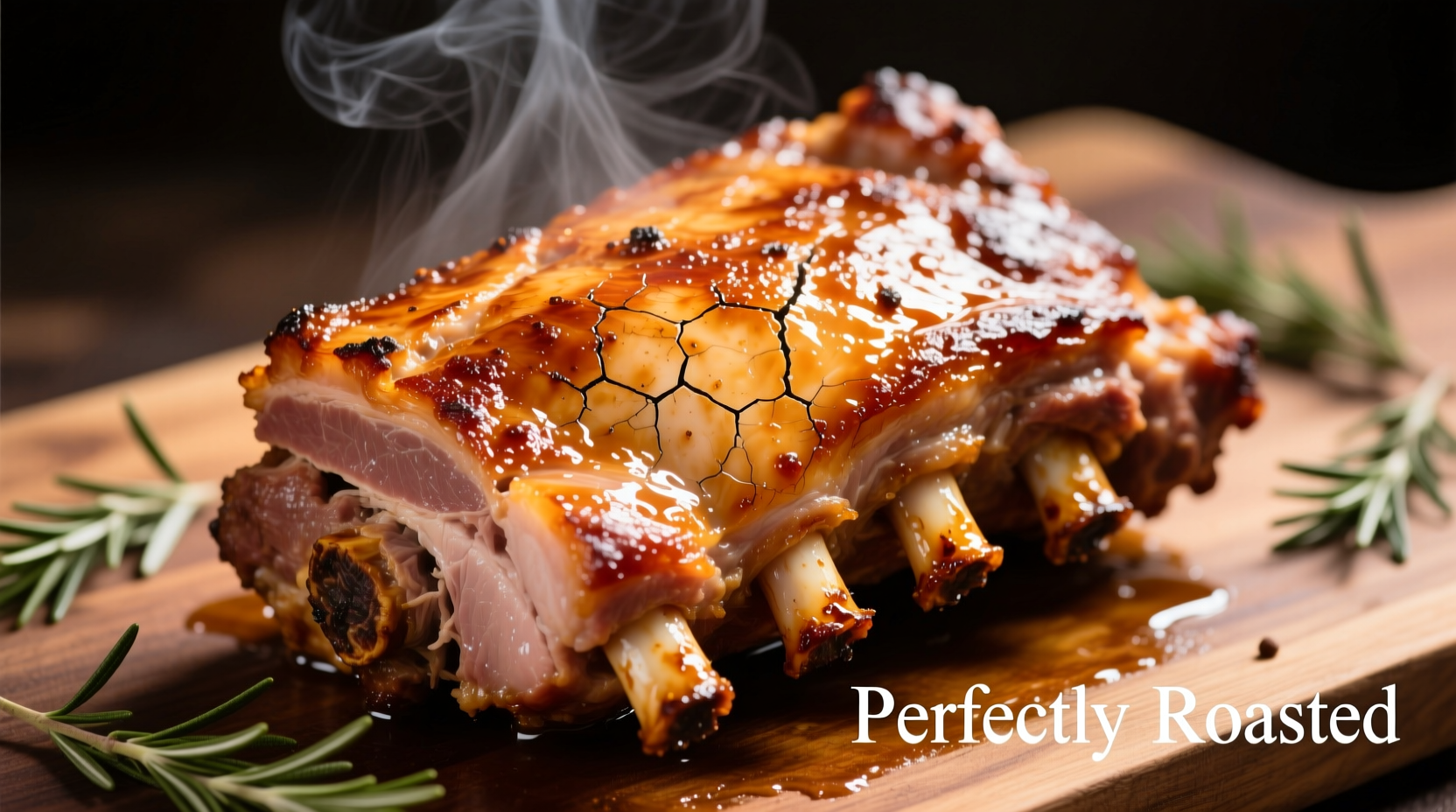The Ultimate Guide to Oven-Roasted Pork Shoulder
Nothing beats the rich, succulent texture of perfectly roasted pork shoulder. This affordable cut transforms from tough connective tissue into melt-in-your-mouth perfection through slow oven cooking. As a culinary professional with experience across fine dining and home kitchens, I've perfected this method to deliver consistent results every time. Whether you're cooking for a special occasion or meal prepping for the week, this guide provides everything you need for flawless pork shoulder.
Why Pork Shoulder Shines in the Oven
Pork shoulder (also called pork butt or Boston butt) contains abundant collagen and marbling that breaks down beautifully during slow cooking. Unlike leaner cuts, this shoulder portion rewards patience with incredible tenderness and deep flavor development. The oven's controlled environment allows precise temperature management - crucial for transforming this humble cut into something extraordinary.

Selecting and Preparing Your Pork Shoulder
Start with a quality 5-7 pound bone-in pork shoulder for best results. The bone enhances flavor and helps maintain moisture during cooking. Look for generous marbling and pinkish-red color without excessive liquid in the packaging.
Dry brine for superior flavor penetration: Generously salt all surfaces 12-24 hours before cooking. This draws out moisture initially, then allows the meat to reabsorb seasoned liquid. For enhanced flavor, add garlic powder, onion powder, and smoked paprika to your salt mixture.
| Cooking Phase | Temperature | Duration | Internal Temp Target |
|---|---|---|---|
| Searing | 450°F (232°C) | 20 minutes | N/A |
| Slow Roasting | 325°F (163°C) | 4-6 hours | 195-205°F (90-96°C) |
| Resting | Room temperature | 30 minutes | Carryover to 200°F |
The Perfect Oven Cooking Process
Phase 1: High-Heat Sear (20 minutes)
Place pork shoulder fat-side up in a roasting pan. Roast uncovered at 450°F for 20 minutes to render fat and create that essential crispy exterior. This initial high heat jumpstarts the Maillard reaction for maximum flavor development.
Phase 2: Slow Roasting (4-6 hours)
Reduce oven temperature to 325°F. Add 1 cup of liquid (apple cider, broth, or water) to the pan. Cover tightly with foil and continue roasting until the internal temperature reaches 195-205°F. Check temperature every 45 minutes after the 3-hour mark using an instant-read thermometer in the thickest part.
Pro Tip: For extra-tender results, wrap the shoulder in butcher paper or aluminum foil when it reaches 160°F (the "Texas crutch" method) to accelerate the stall phase where temperature plateaus.
Troubleshooting Common Issues
Even experienced cooks encounter challenges with pork shoulder. Here's how to handle frequent problems:
| Issue | Causes | Solution |
|---|---|---|
| Dry meat | Overcooking, insufficient fat, no liquid | Check temp early, maintain 195-205°F range, add moisture during cooking |
| Tough texture | Undercooked, insufficient time for collagen breakdown | Continue cooking until 200°F, ensure proper resting time |
| Pale skin | Insufficient searing, covered too early | Extend initial sear, finish uncovered for 30 minutes |
Food Safety Essentials
According to USDA Food Safety and Inspection Service guidelines, pork should reach a minimum internal temperature of 145°F with 3-minute rest time for safety. However, for collagen-rich cuts like shoulder, you need much higher temperatures (195-205°F) to break down connective tissues properly. Always verify temperature in multiple spots using a calibrated thermometer. USDA recommends storing leftovers within 2 hours and consuming within 3-4 days.
Serving and Storage Tips
After resting, the meat should pull apart easily with forks. For pulled pork, shred while warm and mix with 1/4 cup of cooking liquid to maintain moisture. Serve with traditional sides like roasted vegetables, mashed potatoes, or crusty bread. Leftovers make excellent tacos, sandwiches, or chili base.
Properly stored in airtight containers with cooking liquid, roasted pork shoulder maintains quality for 3-4 days refrigerated or up to 3 months frozen. When reheating, add moisture and warm gradually to preserve texture.
Frequently Asked Questions
What's the best temperature for cooking pork shoulder in the oven?
The ideal cooking process starts with a 20-minute sear at 450°F, then reduces to 325°F for slow roasting. This two-stage method creates crispy skin while allowing collagen to break down gradually. Maintain this lower temperature until the internal temperature reaches 195-205°F for perfect tenderness.
How long does it take to cook a pork shoulder per pound?
Plan for approximately 45-60 minutes per pound at 325°F after the initial sear. A 6-pound shoulder typically requires 4-6 hours total cooking time. Always verify doneness with a thermometer rather than time alone, as oven variations and meat density affect cooking duration.
Should I cover pork shoulder when roasting in the oven?
Cover the pork shoulder with foil after the initial 20-minute sear at high heat. This traps moisture during the slow cooking phase, preventing drying while allowing connective tissues to break down. For the last 30 minutes, remove the foil to re-crisp the exterior if desired.
How do I know when pork shoulder is done cooking?
Pork shoulder is perfectly cooked when it reaches 195-205°F internally. At this temperature, a fork should slide in and out with almost no resistance, and the meat should pull apart easily. The texture should be tender but not falling apart completely. Always check multiple spots as temperature can vary within the cut.
Can I cook frozen pork shoulder in the oven?
While possible, cooking frozen pork shoulder isn't recommended. It significantly increases cooking time (add 50% more time), creates uneven cooking, and risks the exterior drying before the interior reaches proper temperature. Thaw pork shoulder in the refrigerator for 24-48 hours before cooking for best results and food safety.











 浙公网安备
33010002000092号
浙公网安备
33010002000092号 浙B2-20120091-4
浙B2-20120091-4